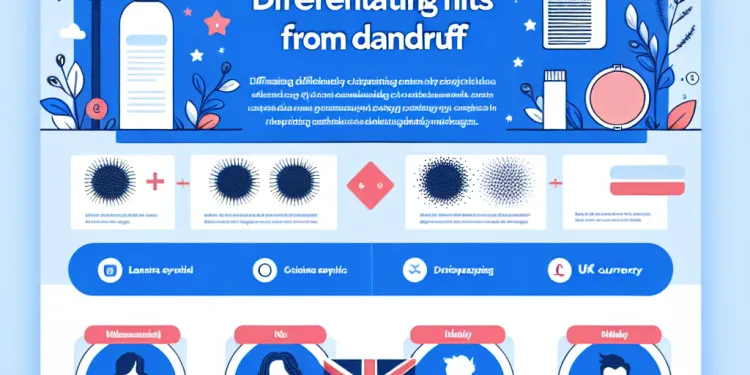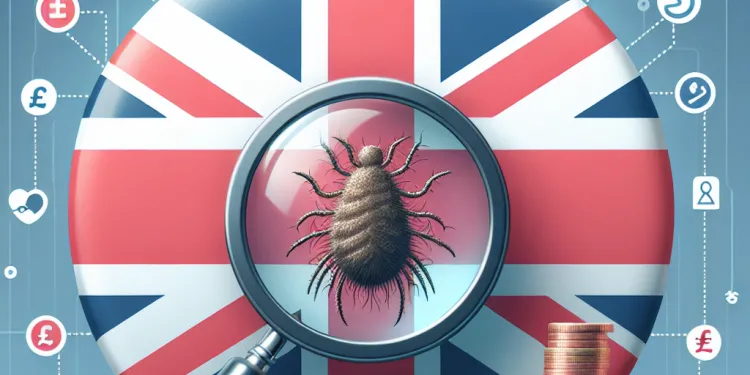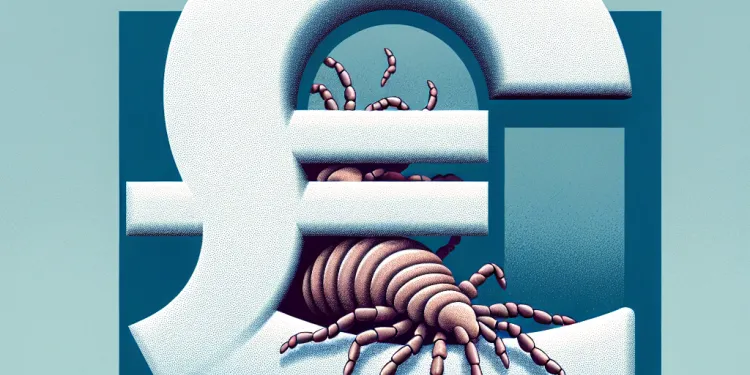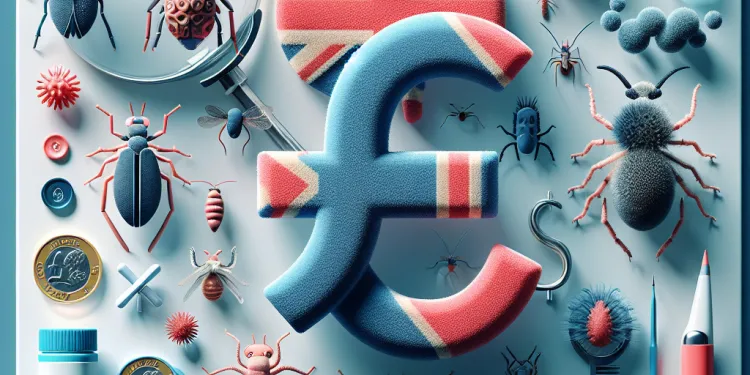
Find Help
More Items From Ergsy search
-

Are nits contagious?
Relevance: 100%
-
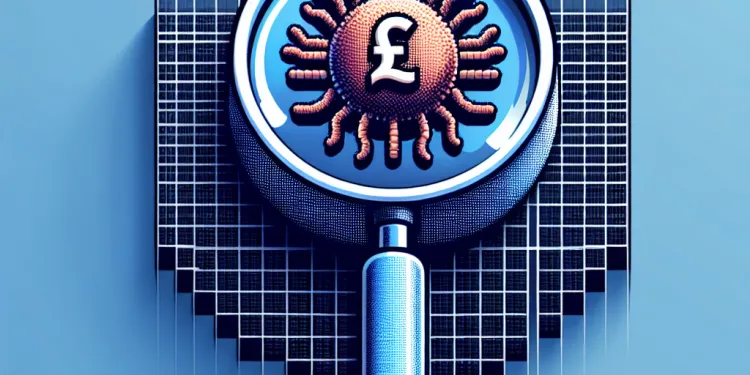
What do nits look like?
Relevance: 94%
-
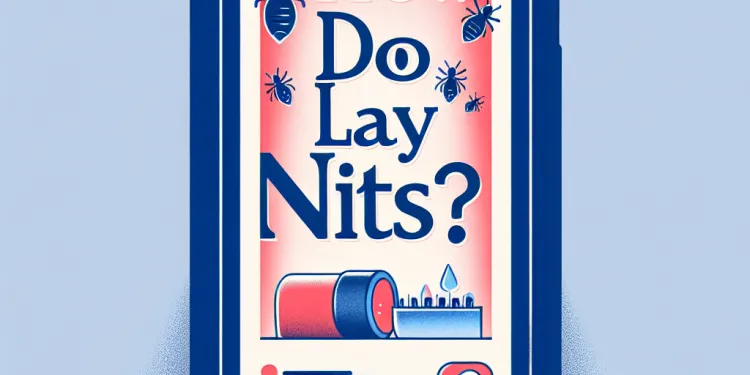
How do lice lay nits?
Relevance: 94%
-

Do nits live off the scalp?
Relevance: 94%
-

Where can nits be found?
Relevance: 94%
-

Can nits hatch into lice?
Relevance: 94%
-

Are nits and head-lice the same thing?
Relevance: 94%
-
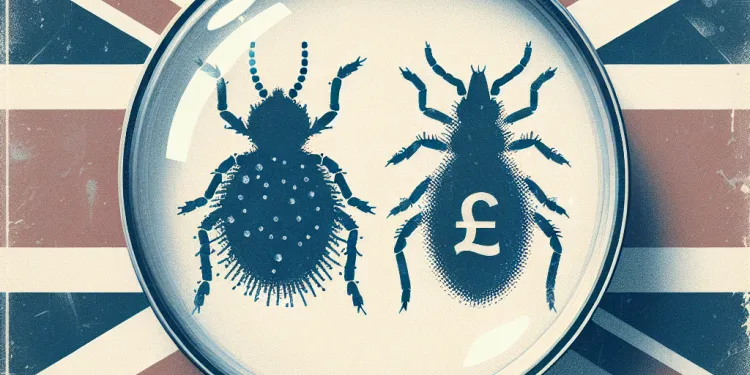
Are nits and head lice the same thing?
Relevance: 91%
-
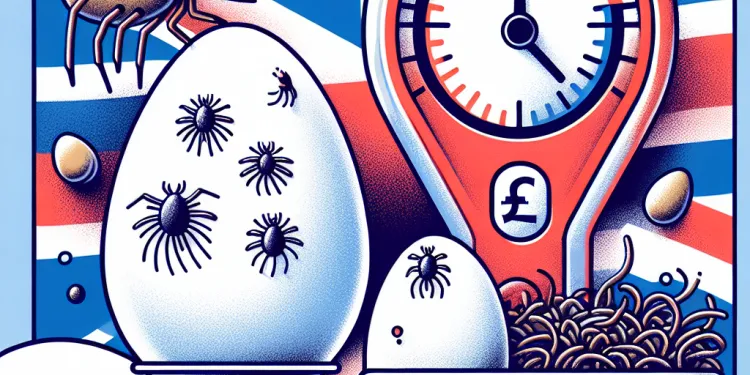
How long does it take for nits to hatch?
Relevance: 88%
-

Can nits survive on furniture or clothing?
Relevance: 88%
Understanding Nits
Nits are the eggs of head lice, tiny parasitic insects that thrive on human scalps. They are a common concern, particularly among school-aged children. In the UK, outbreaks of head lice are frequent, particularly in environments where close contact among individuals is common, such as schools and nurseries. Understanding where nits can be found, and how to identify them, is key to effective management and prevention.
Location on the Scalp
Nits are primarily found on the scalp, where head lice lay their eggs. They are usually attached to hair strands close to the scalp, as the warmth and humidity provide an ideal environment for them to hatch. Most commonly, nits are located about 1 to 2 cm from the scalp. The nits themselves are tiny, oval-shaped, and can be white, yellow, or brown in colour. Identifying nits can be challenging due to their small size and the fact that they are firmly cemented to hair shafts.
Common Areas on the Head
While nits can be found anywhere on the scalp, they are most commonly found behind the ears and at the nape of the neck. These areas are favoured by head lice because they are warmer and often less disturbed during grooming activities. If an outbreak is suspected, these areas should be examined closely. Using a fine-toothed nit comb on wet hair can be an effective method for spotting and removing nits.
Spread and Transmission
Nits and lice do not transfer easily to other surfaces or locations as they require human blood and warmth to survive. However, nits can spread from one individual to another through direct head-to-head contact, which is the most common means of transmission. Sharing personal items like hats, hairbrushes, and bedding can also facilitate the spread of lice, though this is a less common mode of transmission. In the UK, schools may issue notifications about outbreaks to encourage parents to check their children regularly.
Prevention and Management
Preventing the spread of nits involves regular inspection and prompt treatment of infestations. There are various over-the-counter treatments available in the UK that can effectively kill lice and nits. Combing wet hair with a special nit comb is often recommended as part of a treatment routine to ensure any remaining eggs are removed. Educating children about not sharing personal items can also help reduce the risk of transmission. Keeping long hair tied back and conducting routine hair checks are simple yet effective preventive measures.
Understanding Nits
Nits are eggs laid by head lice. Head lice are tiny insects that live on people's heads. They are a common problem, especially for school children. In the UK, head lice are often found in places where people are close together, like schools and nurseries. Knowing where nits are and how to find them helps stop them from spreading.
Location on the Scalp
Nits are found on the head. Head lice lay their eggs on hair strands close to the scalp. The warmth from the head helps the eggs to hatch. Nits are usually 1 to 2 cm from the scalp. They are small and oval-shaped. Nits can be white, yellow, or brown. They are stuck to the hair and are hard to see because they are so small.
Common Areas on the Head
Nits can be anywhere on the head, but they like to be behind the ears and at the bottom of the neck. These places are warm and not disturbed often. If you think you have nits, look closely in these areas. Use a special fine-toothed comb on wet hair to find and remove nits.
Spread and Transmission
Nits and lice don't move easily to other places. They need human blood and warmth to live. But, they spread when people's heads touch. This is the most common way they spread. Sharing things like hats, brushes, and bedding can also spread them, but this is less common. In the UK, schools might tell parents about lice outbreaks so they can check their children.
Prevention and Management
To stop nits from spreading, check for them often and treat them quickly. There are treatments you can buy that kill lice and nits. It's good to comb wet hair with a nit comb to remove eggs. Teach children not to share personal things like hats and brushes. Keeping hair tied back and checking hair often can help prevent nits.
Frequently Asked Questions
Where can nits commonly be found in the hair?
Nits can commonly be found close to the scalp on the hair shafts, usually behind the ears and around the nape of the neck.
Can nits be found on pillows or bedding?
While adult lice can transfer to bedding, nits are firmly attached to hair strands and are unlikely to be found on pillows or bedding.
Are nits only found on human hair?
Yes, nits are the eggs of head lice, which only infest human hair.
Can nits be found on pets?
No, nits and head lice are specific to humans and do not infest pets.
Is it possible to find nits on clothes?
While nits are unlikely to be found on clothes, adult lice can sometimes transfer to clothing.
Where on the hair do nits usually reside?
Nits are usually laid close to the scalp on the hair strand to keep them warm until they hatch.
Can nits be found in eyelashes or eyebrows?
Although rare, nits and lice can occasionally be found in eyelashes or eyebrows.
Are nits visible to the naked eye?
Yes, nits can be visible as small white or yellowish specks attached firmly to the hair shaft.
In what climate conditions are nits more commonly found?
Nits and lice can be found in all climates, although they may thrive in warm, humid conditions.
How can you tell the difference between nits and dandruff?
Nits are firmly attached to hair shafts and cannot be easily brushed off, while dandruff flakes are loose and can be brushed away.
Can nits be found in facial hair?
Nits are typically found on the scalp hair but can rarely be found in facial hair such as beards.
Are nits found in clean or dirty hair?
Nits can be found in both clean and dirty hair; lice do not discriminate based on cleanliness.
Can you find nits in short hair?
Yes, nits can be found in hair of any length if it’s long enough for the lice to attach their eggs.
How are nits spread from person to person?
Nits themselves do not spread. The lice can spread through direct head-to-head contact or sharing personal items, but nits stay attached to the hair where they are laid.
Where are nits most common in children?
Nits are most commonly found behind the ears and at the nape of the neck in children.
Can nits hatch off the human head?
Nits need the warmth of the human scalp to hatch; they are unlikely to hatch off the human head.
How can you identify nits in dark hair?
In dark hair, nits may appear as lighter specks close to the scalp and can be more easily spotted under bright light or using a nit comb.
Where can lice be found apart from the head?
Apart from the head, lice can sometimes be found in body hair or clothing, known as body lice, though head lice predominantly stay on the scalp.
Can old or hatched nits be found on the hair?
Yes, old or hatched nits remain attached to the hair shaft and may appear as empty, whitish casings.
What is the best method to find and remove nits?
The best method to find and remove nits is to use a fine-toothed nit comb on wet hair, working in sections under bright lighting.
Where do nits live in hair?
Nits are tiny eggs from head lice. You can often find them near the scalp. They stick to hair strands, especially behind the ears and at the back of the neck.
If you have trouble reading, try using a reading ruler to follow words. You can also use an app that reads the text out loud.
Can nits be on pillows or in bed sheets?
Grown-up lice can move to bedsheets, but lice eggs stick tightly to hair and are not usually on pillows or bedsheets.
Do nits only live in human hair?
Nits are tiny eggs from lice. Lice need human hair to live. So, nits are mostly found in human hair.
If you want to understand better, ask for help. You can also use pictures to learn more.
Yes, nits are the eggs of head lice. Head lice only live in human hair.
Can pets have nits?
Nits are lice eggs. Lice live in human hair, not on pets.
If you think your pet has something on them, talk to a vet. They can help you.
Using a magnifying glass can help you see small things better.
No, nits and head lice only live on people. They do not live on pets.
Can you find nits on clothes?
Nits, which are baby lice eggs, are usually not on clothes. But adult lice, the grown-up ones, can sometimes get onto your clothes.
Where do nits live on the hair?
Nits are tiny eggs. They stick to the hair near the scalp because it's warm there. This helps them stay safe until they hatch.
Can nits be in eyelashes or eyebrows?
Nits are tiny eggs from head lice. They usually stay in hair on the head. But, very rarely, nits can be found in eyelashes or eyebrows. It is not common.
If you are worried, ask an adult to help you. They can use a magnifying glass to look closely. A doctor can also help you.
Here are some tips:
- Use a bright light to see better.
- Ask grown-ups for help.
- A special comb can help find nits in hair.
Sometimes tiny bugs called nits and lice can be found in eyelashes or eyebrows. This does not happen very often.
Can you see nits without a magnifying glass?
Yes, you can see nits. They look like tiny white or yellow dots that stick to your hair.
Where do head lice and nits like to live?
Nits are tiny eggs from head lice. They like warm and humid places. This means they often live in places where the weather is hot and sticky. You can use a special fine-toothed comb to check for them. Also, gently wash your hair often to help keep them away.Lice and their eggs, called nits, can live everywhere. But they like warm and wet places the best.
How can you tell if it's nits or dandruff?
Here is how to know if it is nits or dandruff:
Nits: Nits are tiny eggs from head lice. They stick to hair close to the scalp. They do not easily brush away. You may need to use a special comb to find them.
Dandruff: Dandruff looks like white flakes on your scalp and hair. It can be brushed away more easily than nits.
If you are unsure, ask an adult or a doctor for help. You can also use tools like a nit comb or a magnifying glass. They can help you see better.
Nits stick to your hair and you can't brush them out easily. But dandruff flakes are not stuck, and you can brush them away.
Can head lice be in beard or mustache hair?
Nits are tiny eggs from head lice. They usually live in the hair on your head. Sometimes, but not often, nits can be in facial hair like beards.
Can you get nits in clean or dirty hair?
Nits can be in clean hair or dirty hair. Lice don’t care if hair is clean or dirty.
Can you see tiny eggs in short hair?
Nits are little eggs from head lice. They stick to hair. Nits are hard to see, even in short hair.
Tips to help:
- Use good light. Make sure it is bright.
- Get a magnifying glass. It helps to see small things.
- Use a special comb called a nit comb. It catches nits.
With these tools, it is easier to find nits!
Yes, lice eggs, called nits, can stick to hair of any length that is long enough.
How do nits move from one person to another?
Nits don't move or spread. Lice can spread by touching heads or sharing things like hats or brushes. Nits stick to the hair where they were put.
Where do children usually get nits?
Nits are tiny eggs from head lice. Kids often get nits in their hair, close to the scalp. To help find nits: - Use a fine-toothed comb on wet hair. - Check in good light. Grown-ups can help comb out nits.Children often have nits behind their ears and at the back of their neck.
Can nits hatch away from people?
Nits are tiny eggs from head lice.
Nits need warmth from the head to hatch.
They cannot hatch away from the head.
If nits are not on a head, they stay as eggs.
Nits, which are tiny eggs, need a warm head to hatch. They do not usually hatch without being on a person's head.
How can you spot nits in dark hair?
Nits are tiny eggs from head lice.
It can be hard to see them in dark hair.
Here are some easy ways to find them:
- Good Light: Look in bright light or sunlight.
- Magnifying Glass: Use a magnifier to see better.
- White Cloth: Put a white cloth over your shoulders to see the nits better if they fall out.
- Fine-tooth Comb: Use a special comb to comb through the hair.
Ask someone to help you check your hair. This can make it easier.
In dark hair, nits look like tiny light spots near the skin on your head. You can see them better if you use a bright light or a special comb called a nit comb.
Where else can lice live besides the head?
Lice are tiny bugs. They can live in hair. But they can also be in other places. Lice might be found in:
- Body hair
- Clothes
- In beds or on furniture
Here are some things that can help:
- Use a fine-tooth comb to check for lice.
- Wash clothes and bedding in hot water to kill lice.
- Vacuum furniture to get rid of lice.
Sometimes, lice can also live in body hair or on clothes. These are called body lice. But most of the time, head lice stay on the scalp.
Can you find old or hatched nits on the hair?
Nits are the eggs of head lice. You might find them stuck to the hair.
Old nits are empty because the lice have already come out. They can look white or clear.
Sometimes, you might see nits that have not hatched yet. They are often brown or yellow.
Use a special comb called a nit comb to help find and remove nits. Ask an adult for help if you need it.
Yes, old nits or hatched nits can stay stuck to the hair. They look like empty, white shells.
How do you find and get rid of nits?
Nits are tiny eggs from head lice. Here's how you can find and remove them:
1. Use a good nit comb. A nit comb has very fine teeth.
2. Wash the hair with special shampoo made to kill lice and nits.
3. Comb wet hair with the nit comb. Do this part by part.
4. Check the comb for nits. Wipe the comb on a tissue.
5. Repeat until you see no more nits or lice.
You can ask an adult to help you. It might be easier with help.
The best way to find and take out nits is to use a special comb with thin teeth. Do this on wet hair. Work on small sections at a time. Make sure you have bright light to help you see better.
Useful Links
- Ergsy carfully checks the information in the videos we provide here.
- Videos shown by Youtube after a video has completed, have NOT been reviewed by ERGSY.
- To view, click the arrow in centre of video.
- Most of the videos you find here will have subtitles and/or closed captions available.
- You may need to turn these on, and choose your preferred language.
- Go to the video you'd like to watch.
- If closed captions (CC) are available, settings will be visible on the bottom right of the video player.
- To turn on Captions, click settings .
- To turn off Captions, click settings again.
More Items From Ergsy search
-

Are nits contagious?
Relevance: 100%
-

What do nits look like?
Relevance: 94%
-

How do lice lay nits?
Relevance: 94%
-

Do nits live off the scalp?
Relevance: 94%
-

Where can nits be found?
Relevance: 94%
-

Can nits hatch into lice?
Relevance: 94%
-

Are nits and head-lice the same thing?
Relevance: 94%
-

Are nits and head lice the same thing?
Relevance: 91%
-

How long does it take for nits to hatch?
Relevance: 88%
-

Can nits survive on furniture or clothing?
Relevance: 88%


